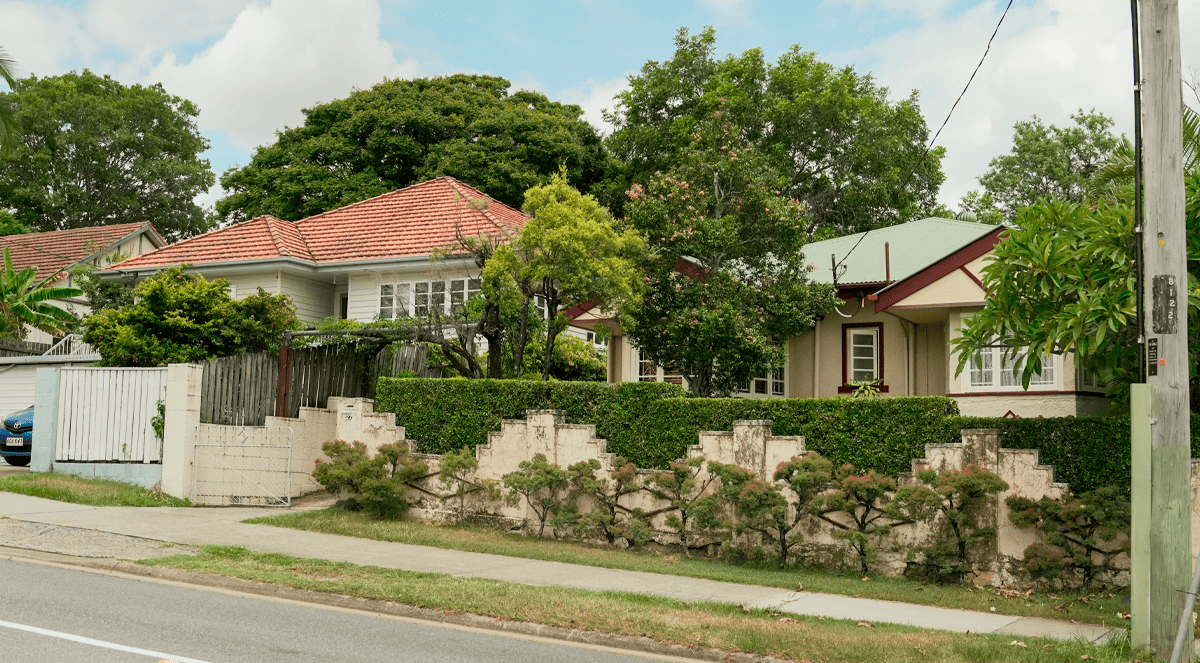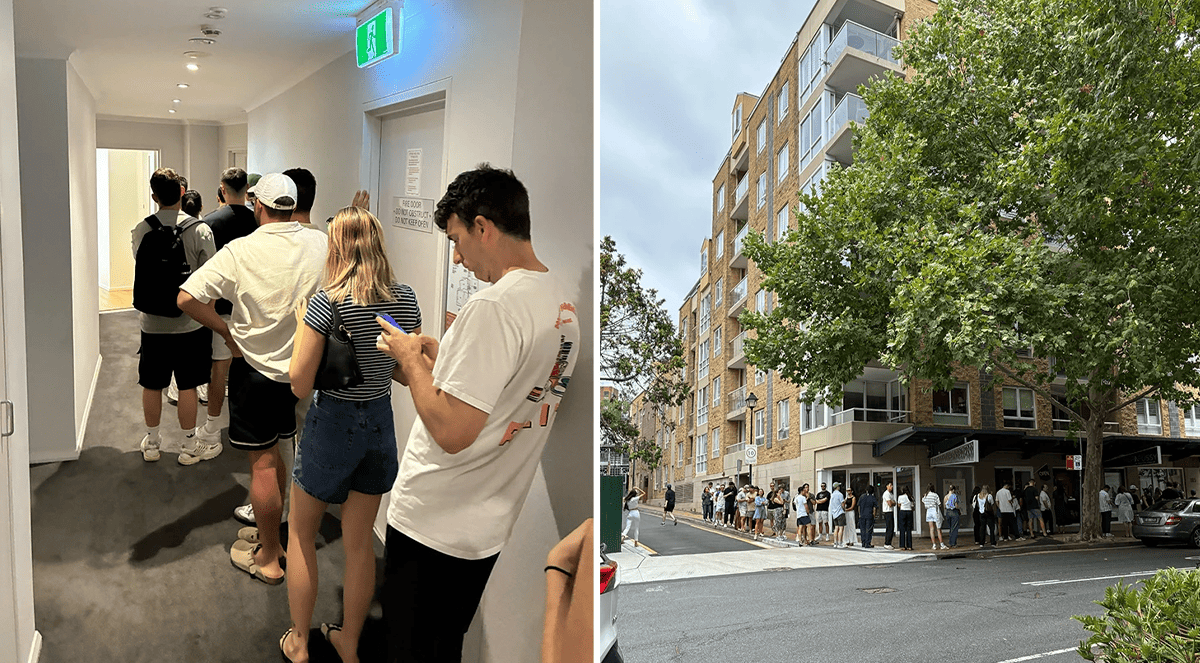Features > Property Education > Investment Tips
Understanding Property Cycles: When to Buy and Sell in Australia?

KEY POINTS
- Australian property cycles consist of four main phases: boom, downturn, stabilisation, and upturn
- Broader economic and political factors influence the property cycles
- Not all regions experience the same phase of the property cycle at the same time
Australians have long been called ‘obsessed’ with property, using it not only as a place to live but also as a means to create wealth. This obsession has driven us to analyse every aspect of the real estate market, from suburbs to dwelling types, in an attempt to spot a goldmine.
But what about the right time to buy and sell? Can this play into a successful investment, or is timing the market unimportant?
Some would say it’s irrelevant, but more seasoned investors know better than that. Bluntly put, the time of a property purchase or sale certainly impacts its profitability, all due to property cycles. So what are they?
What is a property cycle?
The Australian property market rotates through cycles, which consist of four main parts: boom, downturn, stabilisation, and upturn.
These phases represent the recurring pattern of fluctuations in property prices and market activity over time, and they’re largely affected by external economic factors.
Take, for example, interest rate activity. As seen with the recent round of rate hikes that began back in April 2022, property prices are largely affected by the cost and availability of finance (interest rates). House prices generally increase when interest rates are low, and then prices fall when rates are hiked, even if only temporarily.
Other factors influencing property cycles include economic conditions, demographic changes, government policies, and investor sentiment.
Property cycles vary in duration and intensity, and their timing can be difficult to predict accurately.
Understanding the property cycle is crucial for investors, developers, and policymakers to make informed decisions about real estate investments and policies. So, how do these cycles work, and what do the four phases look like?
The boom phase
This is the phase when property prices are climbing rapidly, usually because of constricted supply, high demand, and dropping interest rates. It is the peak of the market when prices reach their highest.
Other characteristics of the boom phase include increased construction activity, investor interest, low rental vacancy rates, and increased competition among buyers.
The boom phase follows an upturn and precedes a downturn. It is generally the shortest phase of the property cycle and the most lucrative time to sell a home, especially if it’s been held for several years.
The downturn phase
A downturn in the property market means that house prices are falling, and this can be due to a range of factors.
Broader economic factors can often contribute to a downturn, like rate hikes, an economic slowdown, global economic uncertainty, and government policies.
During a downturn, a range of tell-tale signs appear. Homes spend longer on the market, sales activity slows down as buyers exercise more caution, and discounting increases.
Additionally, the market often sees an oversupply of homes as a result of the building activity from the previous boom phase combined with the slowdown in buyer sentiment, leading to a surplus.
The stabilisation phase
The stabilisation phase is when property prices begin to level off or show signs of modest growth after experiencing declines during the downturn phase. The rate of decline slows down, and there is a sense of market equilibrium as supply and demand come into balance.
This phase sets the foundation for potential future growth as market conditions improve and buyer confidence returns, eventually leading into the recovery and growth phases of the property cycle again.
The upturn phase
Following the balance in equilibrium that occurs during the stabilisation phase, confidence returns to the market, increasing demand and pushing up property prices.
While demand strengthens, supply constraints become more apparent, sometimes exacerbated by a reduced flow of new builds experienced during the downturn phase.
Buyers and investors become more confident in the market's stability and future growth prospects, leading to increased competition and selling prices.
And then the cycle starts all over again.
Current phase
The Australian property market has recently entered an upturn phase, following a boom during the pandemic and then an interest rate-induced downturn that was briefer and weaker than initially expected.
The recovery took many economists and property experts by surprise, with Australian house prices proving to be robust, rebounding even while rates were still being hiked.
In a report recently released by CoreLogic, dwelling rose to 8 percent in value nationally over the last 12 months. Thus, it is safe to say we are experiencing an upturn, and with interest rates still yet to fall, we could still be a while off hitting the top of the market and entering another boom phase.
It is important to note, however, that while the broader figures would indicate an upturn, not all regions follow the same property cycle. When one area is booming, another might still be stabilising.
Currently, Perth, Adelaide, and Brisbane are well above their previous peak, yet Hobart and Melbourne still have ground to make up before getting back to theirs. Melbourne values have grown just 1.3 percent in the past 12 months, while Hobart has remained stagnant at -0.1 percent.
For this reason, it’s important to know how to decipher a property cycle using current and past data to determine whether an area is worth buying in now or later and whether it’s time to sell your existing property.
Why is it important to understand property cycles?
When investors lack awareness of what property cycle a region is currently in, they leave themselves vulnerable to making poorly timed decisions, leading to untapped profitability potential.
Selling in a downturn or stabilisation phase might mean accepting a lower price than would have been offered in an upturn or boom phase. Similarly, buying in a boom phase often means paying a higher price just to secure a property as competition heats up.
There are other benefits other than the obvious. Buying in a downturn or stabilisation phase could mean having more properties to choose from and more time to make decisions without the pressure of buyer competition. The softer property prices could also mean securing a home that ticks all the boxes of your desired features.
Undeniably, timing the market plays an important role in your investment outcomes. However, time in the market has arguably the greatest impact, with properties held longer and through at least one, if not multiple property cycles, being the greatest factor for profitability.
Stay Up to Date
with the Latest Australian Property News, Insights & Education.




.png?width=292&height=292&name=Copy%20Link%20(1).png)
 SIGN UP FOR FREE NEWSLETTER
SIGN UP FOR FREE NEWSLETTER

.png)






.jpg?width=1920&height=1080&name=Warning%2c%20You%20Might%20Be%20Facing%20Higher%20Taxes%20Soon%20(1).jpg)





.png?width=1920&height=1080&name=Rate%20Drops%20Signal%20BIGGEST%20Property%20Boom%20in%20DECADES%20(1).png)

.jpg?width=1920&height=1080&name=Labor%20vs%20Liberal%20These%20Housing%20Policies%20Could%20Change%20the%20Property%20Market%20Forever%20(1).jpg)
.jpg?width=1920&height=1080&name=QLD%20Slashes%20Stamp%20Duty%20Big%20News%20for%20Investors%20%26%20Home%20Buyers%20(1).jpg)
.jpg?width=1920&height=1080&name=Trump%20Just%20Slapped%20Tariffs%20%E2%80%93%20Here%E2%80%99s%20What%20It%20Means%20for%20Australia%20(1).jpg)
.jpg?width=1920&height=1080&name=Federal%20Budget%202025%20More%20Debt%2c%20No%20Housing%20%E2%80%93%20Here%E2%80%99s%20What%20You%20Need%20to%20Know%20(1).jpg)
.jpg?width=1920&height=1080&name=Australias%20Housing%20Crisis%20is%20about%20to%20get%20MUCH%20Worse%20(New%20Data%20Warns).jpg)
%20(1).jpg?width=1920&height=1080&name=Australias%20RENTAL%20CRISIS%20Hits%20ROCK%20BOTTOM!%20(2025%20Update)%20(1).jpg)
%20(1).png?width=1920&height=1080&name=Is%20Adelaide%20Still%20a%20Good%20Property%20Investment%20(2025%20UPDATE)%20(1).png)
.jpg?width=1920&height=1080&name=RBA%20Shocks%20with%20Rate%20Cuts!%20What%E2%80%99s%20Next%20for%20Property%20Investors%20(1).jpg)
%20(1).jpg?width=1920&height=1080&name=I%20Predict%20The%20Feb%20Rate%20Cut%20(My%20Price%20Growth%20Prediction)%20(1).jpg)
.png?width=1920&height=1080&name=Why%20Property%20Prices%20Will%20Rise%20in%202025%20Market%20Predictions%20(1).png)
.jpg?width=1920&height=1080&name=Why%20Investors%20Are%20Choosing%20Apartments%20Over%20Houses%202%20(1).jpg)
.jpg?width=1920&height=1080&name=Why%20Rate%20Cuts%20Will%20Trigger%20A%20Property%20Boom%20(1).jpg)
.jpg?width=1920&height=1080&name=Retire%20On%202Million%20With%20One%20Property%20(Using%20SMSF).jpg)
.jpg?width=1920&height=1080&name=4%20Reasons%20Why%20You%20Should%20Invest%20in%20Melbourne%20Now%20(1).jpg)
%20(1).jpg?width=1920&height=1080&name=Old%20Property%20vs%20New%20Property%20(Facts%20and%20Figures%20Revealed)%20(1).jpg)
%20(1).jpg?width=1920&height=1080&name=Will%20The%20New%20QLD%20Govt%20Create%20a%20Property%20Boom%20or%20Bust%20(My%20Prediction)%20(1).jpg)
%20Scott%20Kuru%20(1).jpg?width=1920&height=1080&name=Inflation%20Hits%20Three-Year%20Low%20(Will%20RBA%20Cut%20Rates%20Soon)%20Scott%20Kuru%20(1).jpg)
.jpg?width=1920&height=1080&name=How%20to%20Buy%20Investment%20Property%20Through%20SMSF_%20The%20Ultimate%20Guide%20(1).jpg)
.jpg?width=1920&height=1080&name=Victoria%20Slashes%20Stamp%20Duty%20Melbourne%20Set%20to%20Boom%20Scott%20Kuru%20(1).jpg)
.png?width=1571&height=861&name=Are%20Foreign%20Buyers%20Really%20Driving%20Up%20Australian%20Property%20Prices%20(1).png)
.jpg?width=1920&height=1080&name=The%20Single%20Factor%20That%20Predicts%20Property%20Growth%20Regions%20(1).jpg)
%20Scott%20Kuru%20(1).jpg?width=1920&height=1080&name=My%20Prediction%20On%20Rates%20%26%20Negative%20Gearing%20(Market%20Crash)%20Scott%20Kuru%20(1).jpg)

-1.png?width=1920&height=1080&name=Major%20Banks%20Cut%20Rates%20Will%20RBA%20Follow%20Suit%20(Sept%20Rate%20Update)-1.png)
%20Scott%20Kuru-1.png?width=1920&height=1080&name=Rate%20Cut%20Coming%20What%20New%20Zealands%20Move%20Means%20for%20Australia%20(Sept%20Prediction)%20Scott%20Kuru-1.png)
%20(1).jpg?width=1920&height=1080&name=Buy%20when%20the%20interest%20rates%20are%20high!%20(Why%20you%20must%20buy%20now!)%20(1).jpg)
.jpg?width=1920&height=1080&name=Carms_Revised%20Taxes%20Due%20Aug%209%20YT%20Thumbnail02%20(1).jpg)
.jpg?width=1920&height=1080&name=Carms_Too%20Little%20Too%20Late%20Aug%207%20YT%20Thumbnail01%20(1).jpg)









.jpg?width=1920&height=1080&name=Carms_Rate%20Drop%20In%20July%20Jun%2010%20YT%20Thumbnail02%20(1).jpg)
.jpg?width=1920&height=1080&name=Carms_Own%20a%20Property%20V6%20Jun%205_YT%20Thumbnail%20(1).jpg)









.png?width=1920&height=1080&name=Artboard%201%20(3).png)






.jpg?width=1920&height=1080&name=YT%20thumbnail%20%20(1).jpg)

